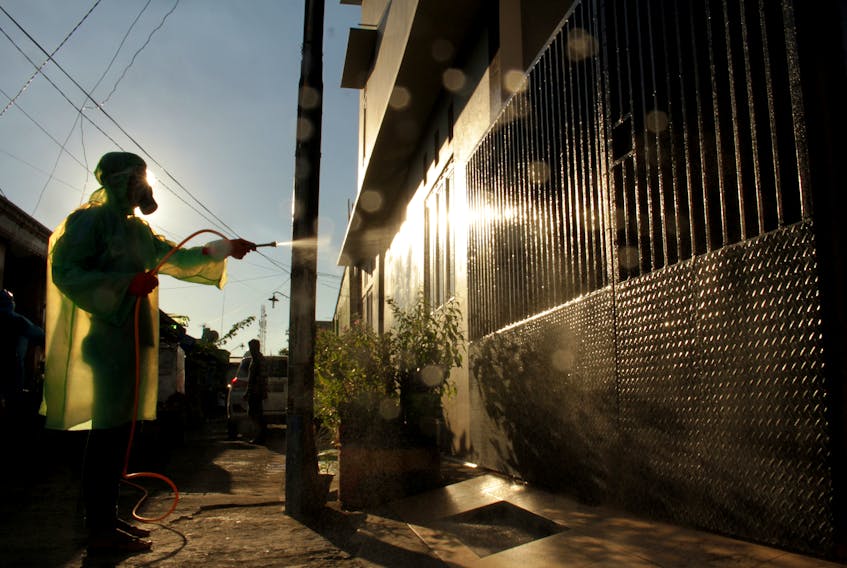The pictures were impossible to ignore. It was a beautiful weekend in Vancouver. The sun was out. The air smelled like water and trees. And the young, as the young do, were taking full advantage. Even with the world on lockdown, they were out in droves, on the beaches, in backyards. One group was spotted partying on a rooftop, playing beer pong and eating from a communal grill. It was as if they all stopped listening after “social” and missed the part about “distancing.”
They’ve been dubbed “COVIDIOTS,” the people, many of them young, many of them young men, too self-absorbed, too ill-informed or too thick-headed to believe that social distancing, self isolation and pleas to stay at home apply to them too. They’ve made an easy punching bag. In a time of global panic, fear goes down a little easier when it’s leavened with a bit of hate.
But experts in communication and human behaviour believe it’s a little more complicated than that. This isn’t just selfish dummies being dumb, they say. (Though there is some of that.) Humans have a hard time taking collective risk seriously. “We are wired by evolution to respond to immediate threats,” said Robert Gifford, a professor of psychology and environmental studies at the University of Victoria. In a collective risk scenario like this one, those threats need to be communicated clearly, simply and without confusion for the public to buy in. And far too often, when it has come to COVID-19, that hasn’t happened.
There’s tens of thousands of cases likely in Ontario right now. We should be leading with that.
Even today, with much of the economy shut down and most of the country stuck inside, the collective dangers of the pandemic aren’t always being communicated to the public with enough force, believes Yoni Freedhoff, an associate professor of family medicine at the University of Ottawa. “My concern right now is that the way we report on (new) cases is flawed,” he said. “We keep talking about 400 new cases or 500 (new) cases in Ontario, but that’s 500 confirmed cases with limited testing and 10,000 tests backlogged and testing restricted to a very specific population. There’s tens of thousands of cases likely in Ontario right now. We should be leading with that.”
Freedhoff believes those relatively low new case numbers are part of what’s letting some people believe, even now, that this is not going to affect them. “Obviously, that false sense of security is going to get dashed to hell in a week or two when we expect to see more of the surge coming,” he said. “But perhaps with more accurate or more responsible discussion of case numbers, even at the tweet level or the bullet point level or the headline level, more people might be taking this more seriously.”
The problem with presenting an even mildly downplayed risk is that most of our brains are already wired toward optimism, said Gifford. “We have this kind of general bias that things will be okay, that I’m smarter than most people, that I’m better looking than most people. Things will work out,” he said. In life, that’s useful most of the time. It’s the kind of thing that helps people find mates and succeed in school. “But if it’s a matter of transmitting a disease, it’s not such a good idea.” So when people read about 500 new cases in the news, in a province as vast an Ontario, there are powerful forces in their brain telling them that the problem can’t really be that bad.
All of that is doubly true for young people, especially young men. A recent poll of Canadians in the National Post found 49 per cent of women said they were very worried about the outbreak compared with 30 per cent of men. And as recently as a week ago, much of the public information on COVID-19 could have been designed in a lab, so well was it calibrated for young people to ignore it.
That’s not just true in Canada, either. “The messaging we’ve had here (has been) 80 per cent of COVID cases are mild and it generally only affects older people,” said Lee Ashton, a postdoctoral researcher at the University of Newcastle in Australia. “So a lot of younger people are therefore assuming that they’re immune to it. They think it’s not going to affect them so they don’t see it as a major issue.”
Young men, especially, are a notoriously hard group to reach with messages about health and risk, said Ashton, whose research involves young men, messaging and nutrition. If it were up to him, he’d dumb it all down. He’d stop talking about “social distancing,” and “flattening the curve.”
“I would just be as clear as possible,” he said. “Three words: stay at home. And only leave to shop … once a week. And that’s it.”
That doesn’t just go for young people, either. “Clear, consistent, uncomplicated messages are crucial for driving home danger and changing public behaviour for all demographics,” said Elias Fernández Domingos, a Spanish researcher who studies collective risk. Stories, theories or messages from people with platforms or power that muddy the water or give optimists a cognitive way out can be quite literally fatal in a situation like this. “This is a big problem,” Fernández Domingos said.
• Email: [email protected] | Twitter: richardwarnica
Copyright Postmedia Network Inc., 2020









